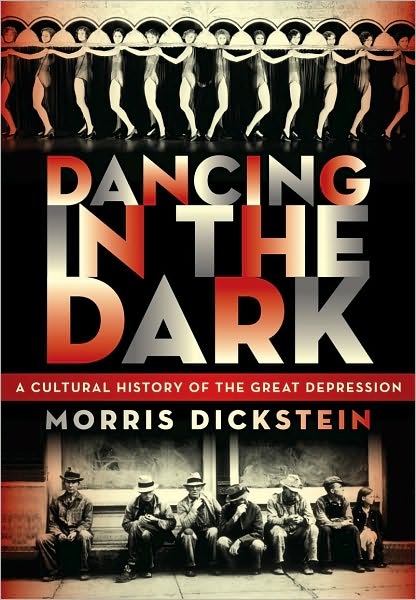 Morris Dickstein loves impossible quests. Years ago Dickstein tried to capture the Zeitgeist of the 1960’s in Gates of Eden: American Culture in the Sixties. Dancing in the Dark follows that same model: Dickstein riffs on the music, movies, and books of the decade. Clearly, even 600 pages isn’t enough to capture the cultural history of such an important time in America. But Dickstein does his best analyzing what he considers the key book of the decade, Henry Roth’s Call It Sleep. Raymond Chandler gets a brief mention. Then it’s off to the music of the Depression centering around the Gershwins. I found Dickstein’s treatment of the movies of the Thirties the weakest part of the book. But there are other books like John Howard Reid’s Award-Winning Films of the 1930s to supplement that gap. All in all, Dickstein’s book gives an intelligent overview of the decade and its art. GRADE: B
Morris Dickstein loves impossible quests. Years ago Dickstein tried to capture the Zeitgeist of the 1960’s in Gates of Eden: American Culture in the Sixties. Dancing in the Dark follows that same model: Dickstein riffs on the music, movies, and books of the decade. Clearly, even 600 pages isn’t enough to capture the cultural history of such an important time in America. But Dickstein does his best analyzing what he considers the key book of the decade, Henry Roth’s Call It Sleep. Raymond Chandler gets a brief mention. Then it’s off to the music of the Depression centering around the Gershwins. I found Dickstein’s treatment of the movies of the Thirties the weakest part of the book. But there are other books like John Howard Reid’s Award-Winning Films of the 1930s to supplement that gap. All in all, Dickstein’s book gives an intelligent overview of the decade and its art. GRADE: B


I bet Megan would like this one.
Megan sure would like this book, Patti. After reading it, you immediately want to read some of those Thirties books, listen to some Thirties music, and watch some Thirties screwball comedies!
I don’t believe I’ve ever heard of Henry Roth or Call It Sleep.
CALL IT SLEEP is a harrowing novel, Rick. Not for the weak of heart.
Phil also likes Radical Visions and American Dreams on that era. Call It Sleep is harrowing, all right.
Phil is right on the money, Patti. Dickstein’s DANCING IN THE DARK is a more personal take on the Depression decade.
CALL IT SLEEP is a downer, but considered a classic about Jewish immigrants in New York.
Personally, I couldn’t get into it.
But that’s jsut me.
I read CALL IT SLEEP when AVON reprinted it as a paperback, Jeff, probably in the 1960s. I was struck by the novel’s grittiness.
Rick, it was a failure when it first came out but when revived in the 1960’s became a bestseller.
Henry Roth wrote nothing for decades after CALL IT SLEEP, Jeff. Then Roth started writing again in 1979 breaking his long silence.